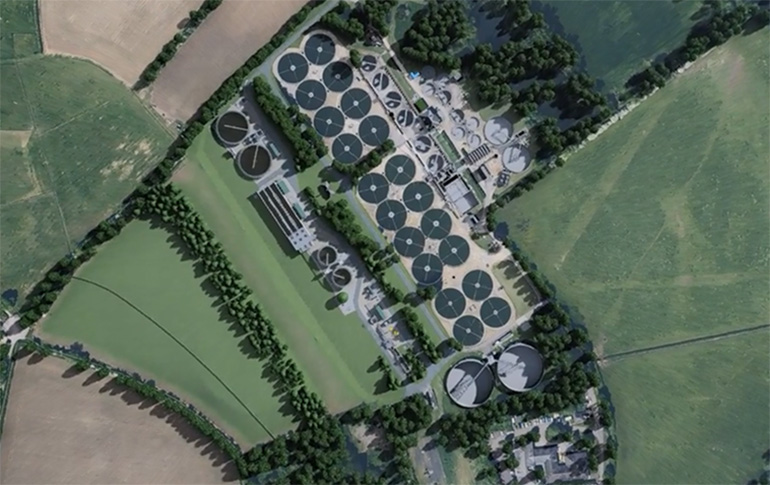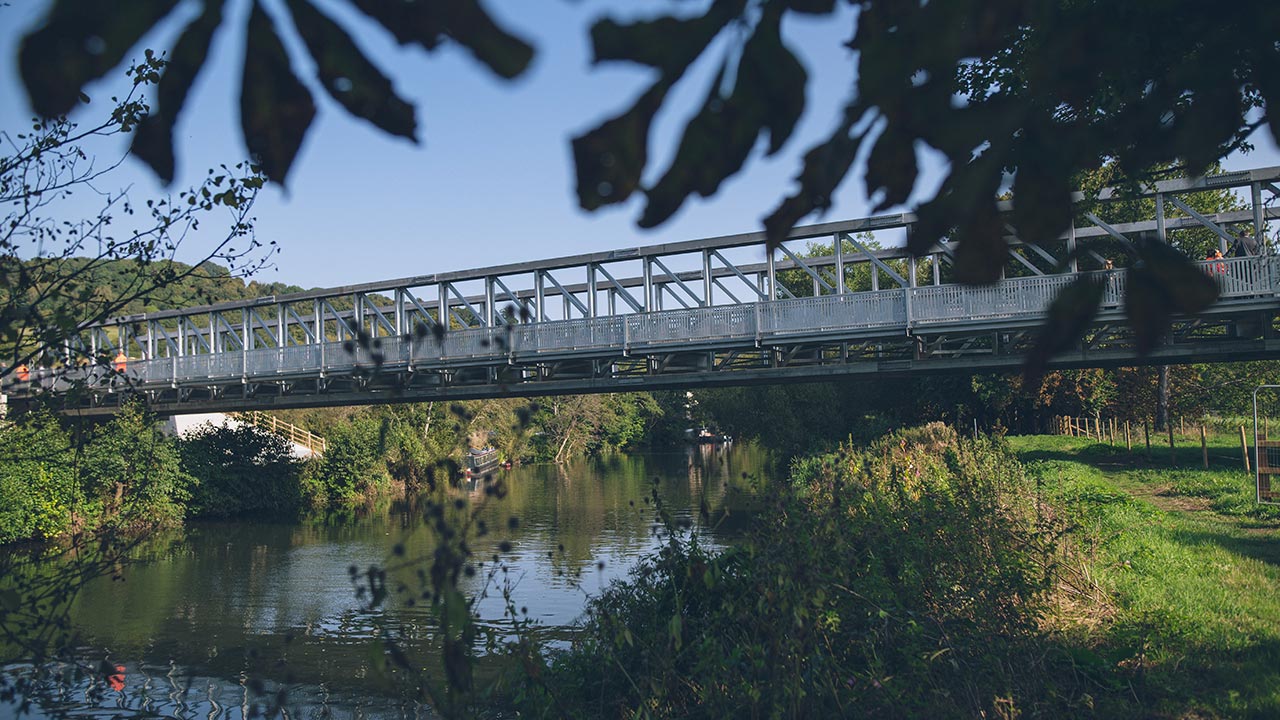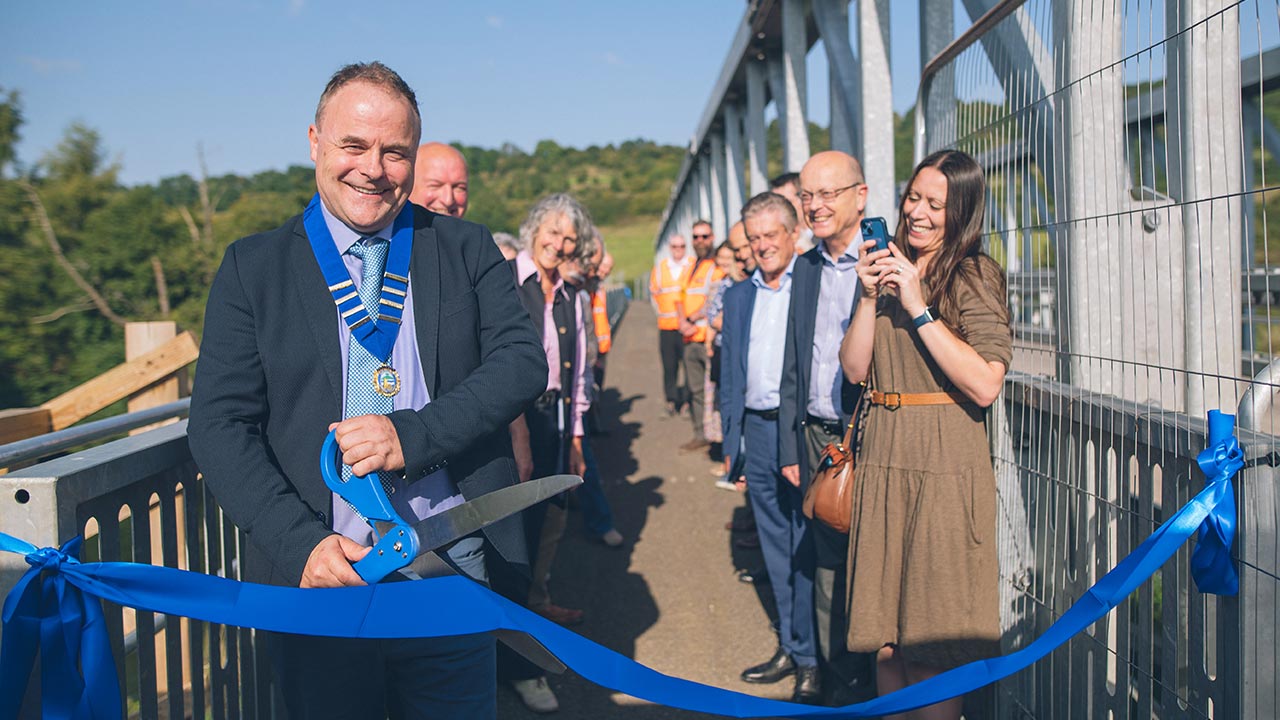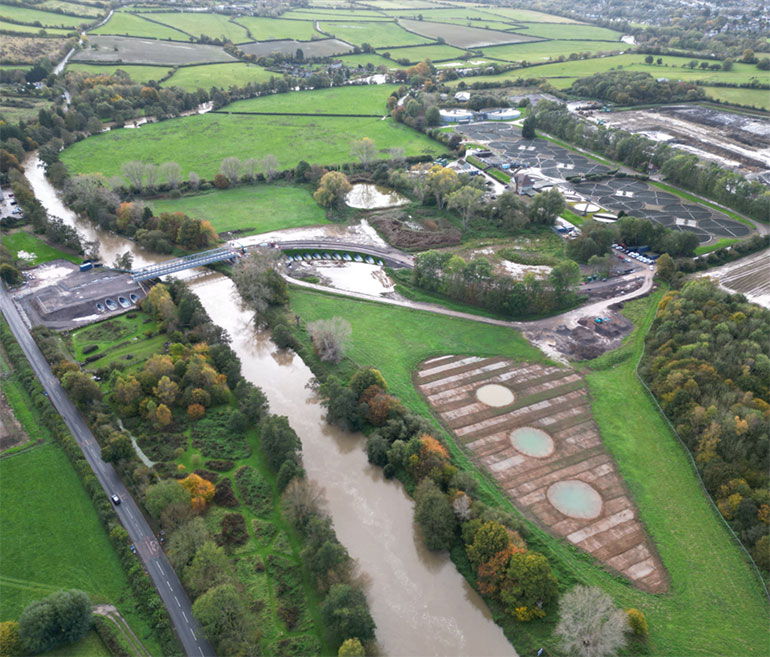- Home
- Our purpose
- Investment schemes
- Saltford water recycling centre
Saltford water recycling centre
Our two-year £35 million expansion will boost the capacity of the Mead Lane site to treat sewage from the city of Bath and the surrounding area.
Why is this expansion needed?
The current site, shown on maps from 1914, was expanded in the 1960s but, apart from two large storm tanks and four filter beds installed in the early 2000s, has largely remained unaltered in the years since.
With the local population projected to expand in future years, further development is now necessary to ensure that the enhanced regulations to improve river water quality are met.
The Saltford centre also forms part of Wessex Water’s nutrient removal programme within the Bristol Avon Catchment.
One of 66 water recycling centres within that catchment, Saltford currently contributes between seven and 12 per cent of the total catchment removal of nutrients entering local watercourses, preventing blue green algae and endangering aquatic life.
These facilities are being extended as the site expands.

What will this expansion look like?
By boosting the capacity of the water recycling centre, Wessex Water will be able to treat more than 800 litres of wastewater per second – around a 40 per cent increase on current flows – to help meet increasing demands.
Based to the west of the existing water recycling centre site, these new treatment processes include new flow measurement and screening equipment, grit and phosphorous removal facilities, primary and final settlement tanks and an activated sludge plant.
These will be built with associated pumping stations and electrical supply and control infrastructure.
The project, costing an estimated £35 million, is expected to be completed in 2026.
The story so far
Since the turn of 2024, our team has been constructing all major structures and pumping stations and installing pipework and associated infrastructure for the expansion.
During both this and the access bridge project, more than 300,000 tonnes of earth have been shifted to help prepare the ground.
As the expansion site has taken shape our on-site team – numbering up to 50 at its peak – has also helped to pour a total of 4,000 cubic metres (m3) of concrete across the expansion area so far.
A further 600m3 will have been poured by the time this element of the work has been finished in January 2025.
Pipeline work to link new structures to each other and the wider site also got under way in late 2024, with 700mm diameter pipework installation taking place.
In addition, more than 3000 metres – or nearly two miles – of ducting was also being put in place.
We’ve also begun water testing some of these structures, including the Activated Sludge Process (ASP), which is where air is blown into settled sewage to help break it down.
In total, five million litres of reused treated effluent have been used as part of testing, while more than 12 million litres are required for testing across all of the site’s new structures, which is enough to fill five Olympic-sized swimming pools.
With many of the large structures on the expansion site complete, two cranes – a 70-tonne crawler and a larger 100-tonne one – were removed in late 2024.
The mechanical and electrical services are due to take centre stage in early 2025, with metal access walkways and glass coated steel panels for the primary settlement tanks – a key initial stage of the sewage treatment process – put in place.
Building a bridge
Our new £9 million access bridge, helping to ease traffic travelling through narrow lanes locally and allowing staff to get to and from the centre and A431 road, was completed in 2024.
An adjacent footway crossing also now links the A431 on the east of the River Avon to the local public right of way network and the River Avon Trail on the west, providing a new pedestrian link between the villages of Bitton and Saltford.
After building supporting abutments, wingwalls and embankments in the summer, our team successfully launched and landed the bridge into place across the River Avon during autumn 2023.
Drainage and kerbing were added before the new access road started taking construction traffic to and from construction of the water recycling centre extension from February 2024.

The new footway was officially opened by members of the parish council of Saltford and Bitton, as well as Wessex Water chief executive Colin Skellett, in September 2024.
Approximately 5,000 trees and shrubs were planted and ground reinstated around the bridge.

What about the impact on the local environment?
Wessex Water has worked closely with Bath & North East Somerset Council on developing measures to mitigate the landscape and visual impact of this scheme as a requirement of planning permission being granted, with the centre sitting within the green belt and in view of the Cotswolds Area of Outstanding Natural Beauty (AONB).
The planning application determined that the scheme will provide a biodiversity net gain of more than 10 per cent.
Part of this is the ‘Ecological Wetland Scrape’, which has been designed to provide a habitat for amphibians, invertebrates, mammals and wetland birds.
Centred on three ponds designed to give seasonally wet areas, extended undulations mimic the ‘ridge and furrow’ of a natural, ancient floodplain meadow, allowing native plants - and the animals that rely on them - to naturally establish.

Wider recognition
Our work at Saltford – one of our flagship investments - is also being noticed further afield.
The access bridge scheme clinched the Institution of Civil Engineers (ICE) South West Best Project Under £10 million Award in November, with the judges impressed by the significant long-term investment in the ecology of the area, while also providing public access to allow local communities to see the environmental improvement over time.
That ecological work, associated with the scrapes, lagoons and planting in those areas either side of the access bridge road, has also earned the recognition of two silver Green Apple Environment Awards, for conservation and habitat and diversity, which reward and promote environmental best practice around the world.
Progress
- February 2024: Construction traffic begin using the new access bridge.
- September 2024: Opening of pedestrian footway adjacent to access bridge.
- To September 2025: Civil construction of main structures at expansion, including piling, then phased handover of structures for mechanical and electrical installation.
- January – December 2025: Mechanical and electrical installation.
- August – October 2025: Final landscaping and seeding.
- January – May 2026: Site to be cleared, commissioning, reliability and performance testing.
